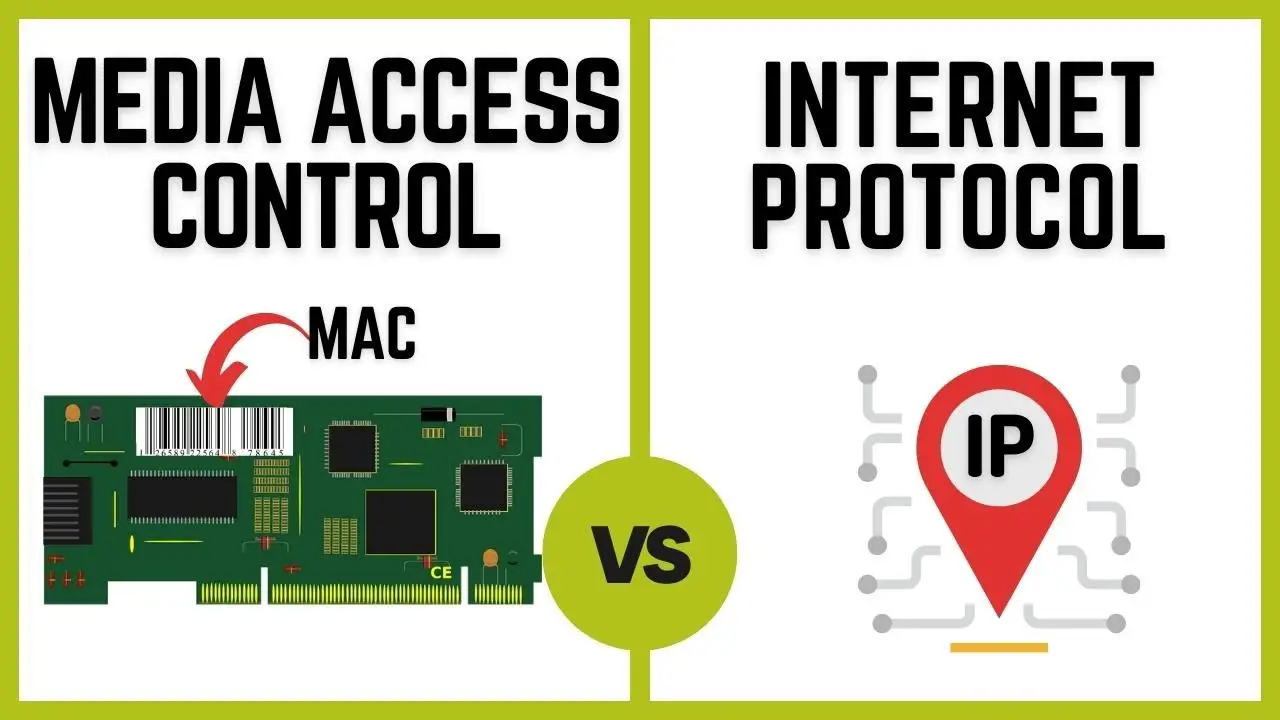MAC Address vs. IP Address: What’s the Difference and Why Does It Matter?

When it comes to network communication, two key components enable devices to connect and share information: the difference between ip address and mac address. Both play an integral role in how data is transmitted and received across networks, but they function in entirely different ways. Understanding these differences can help clarify the fundamental processes behind how your computer, phone, or any other connected device communicates within a network. In this blog post, we’ll break down what each address type is, how they work, and the critical differences between them.
What is a MAC Address?
A MAC (Media Access Control) address is a unique identifier assigned to a network interface card (NIC) in a device by the manufacturer. This address is used for identifying devices at the hardware level within a local network (such as your home or office Wi-Fi). MAC addresses operate at the Data Link Layer (Layer 2) of the OSI model and are used to ensure that data packets are sent to the correct physical device within the same network.
A MAC address is typically a 12-digit hexadecimal number, divided into pairs and separated by colons or hyphens. For example, a typical MAC address might look like 00:1A:2B:3C:4D:5E. The first six characters identify the manufacturer of the device, while the remaining six represent a unique identifier for that specific device.
Key Characteristics of a MAC Address:
- Unique to the device: No two devices share the same MAC address.
- Permanent: Assigned during the manufacturing process and typically unchangeable.
- Format: 48-bit, represented in hexadecimal format (e.g., 00:1A:2B:3C:4D:5E).
- Used in LAN: Primarily used within a local area network (LAN) to route data to specific devices.
What is an IP Address?
An IP (Internet Protocol) address is a logical address assigned to a device when it connects to a network. It enables devices to communicate with each other across different networks, including the global internet. IP addresses operate at the Network Layer (Layer 3) of the OSI model, which is responsible for routing data across multiple networks.
IP addresses come in two versions: IPv4 and IPv6. IPv4 addresses are 32-bit numbers, typically represented in decimal format as 192.168.0.1, while IPv6 addresses are 128-bit numbers, often shown in hexadecimal format, such as 2001:0db8:85a3:0000:0000:8a2e:0370:7334.
Key Characteristics of an IP Address:
- Dynamic: Often changes when a device reconnects to a network.
- Logical: Assigned based on the network you’re connected to.
- Format: IPv4 is a 32-bit address (e.g., 192.168.1.1), while IPv6 is a 128-bit address (e.g., 2001:0db8:85a3::7334).
- Used for global communication: IP addresses allow devices to communicate across networks, including the internet.
MAC Address vs. IP Address: Understanding the Differences
While both MAC and IP addresses help in the identification and communication of devices, they are fundamentally different in their functionality and scope. Below are the main distinctions between the two:
1. Purpose
- MAC Address: A MAC address identifies a device at the hardware level within a local network. It ensures that data packets are sent to the correct physical device.
- IP Address: An IP address identifies a device at the network level, allowing data to be routed across different networks.
2. Permanence
- MAC Address: It is a permanent, unchangeable identifier assigned during the manufacturing of the device.
- IP Address: It is a dynamic identifier that can change depending on the network or configuration. Devices can be assigned a new IP address every time they reconnect to a network.
3. Layer in the OSI Model
- MAC Address: Operates at the Data Link Layer (Layer 2), ensuring devices within the same local network can communicate.
- IP Address: Operates at the Network Layer (Layer 3), allowing devices to communicate across different networks.
4. Scope of Use
- MAC Address: Primarily used for local network communication, like connecting devices in your home network.
- IP Address: Used for global communication, enabling devices to access the internet and interact with devices across the world.
5. Format
- MAC Address: A 48-bit hexadecimal address (e.g., 00:1A:2B:3C:4D:5E).
- IP Address: Can be a 32-bit (IPv4) or 128-bit (IPv6) address, shown in decimal or hexadecimal format (e.g., 192.168.0.1 or 2001:0db8:85a3::7334).
The Role of MAC and IP Addresses in Network Communication
Both the MAC and IP addresses are critical in how data is transmitted and received across networks. When you send data from your device to another device or website, both addresses are involved in the process.
- Local Network Communication (MAC Address): When data is sent within a local network, such as from your laptop to your printer, the MAC address is used to ensure that the data reaches the correct device.
- Global Communication (IP Address): When you send data to a device or website outside of your local network, the IP address is used to route the data across different networks. For example, when you access a website, your device’s IP address is used to send and receive data over the internet.
How MAC and IP Addresses Work Together
In most cases, both MAC and IP addresses are used simultaneously in data communication. Here’s a step-by-step breakdown:
- Step 1: When you send a request (e.g., visiting a website), your device assigns the correct IP address of the destination.
- Step 2: The router uses the IP address to route the data across the internet.
- Step 3: Once the data reaches the local network of the destination, the MAC address is used to deliver the data to the correct device.
This process, known as address resolution, involves mapping the IP address to the correct MAC address within the local network. The Address Resolution Protocol (ARP) is responsible for this task, ensuring data is correctly routed within a network.
Static vs. Dynamic IP Addresses
It’s worth noting that IP addresses can be either static or dynamic. A static IP address is manually assigned to a device and doesn’t change, which is useful for servers and devices that need a consistent address. On the other hand, a dynamic IP address is automatically assigned by a DHCP (Dynamic Host Configuration Protocol) server and may change each time a device connects to the network.
Security Considerations for MAC and IP Addresses
Both MAC and IP addresses have their own security implications. Since a MAC address is unique and fixed, it can be used to identify and authenticate devices on a network. Many networks use MAC filtering as a security measure, allowing only devices with specific MAC addresses to connect.
IP addresses are more vulnerable to external threats like hacking or DDoS attacks, as they are visible across networks. Using a VPN (Virtual Private Network) or a firewall can help protect your IP address and improve security when browsing online.
Conclusion
In conclusion, both MAC addresses and IP addresses are essential components of networking, but they serve different purposes. The MAC address is a unique hardware identifier used for communication within a local network, while the IP address is a logical identifier used to route data across different networks, including the internet.
Understanding the differences between these two addresses helps in troubleshooting network issues, improving network security, and configuring devices. Whether you’re setting up a home network or working in IT, knowing how MAC and IP addresses interact is crucial for efficient and secure communication.

